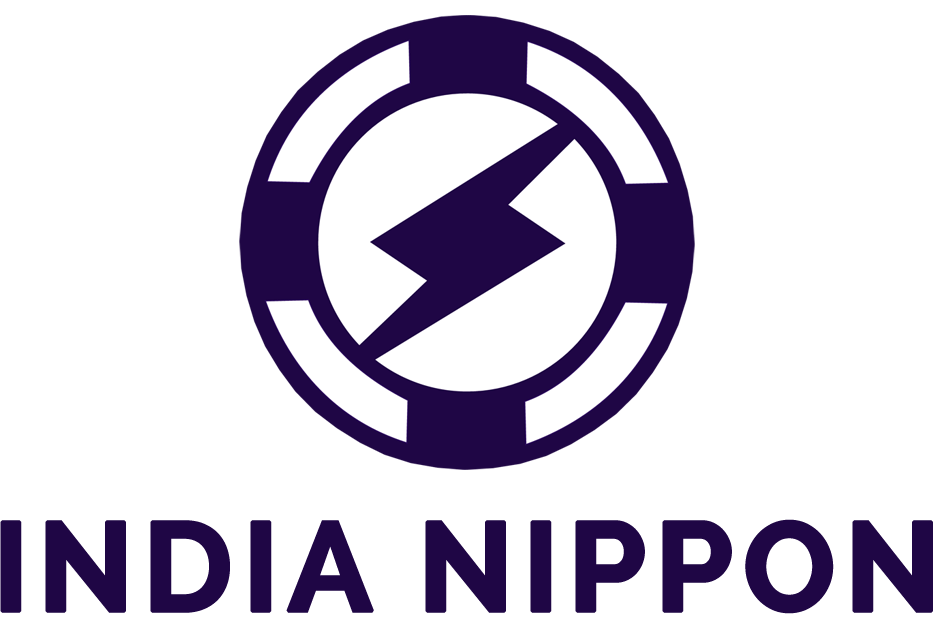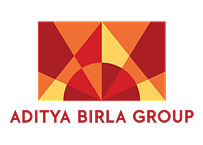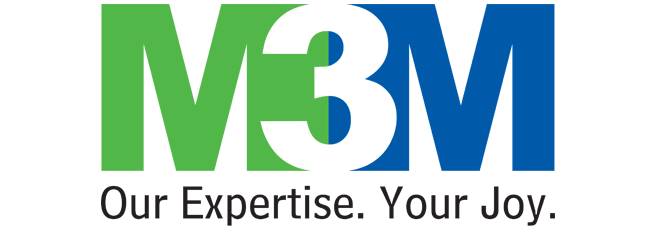Procol • April 15, 2025
The Ultimate Complete Guide to Reverse Auction Strategy
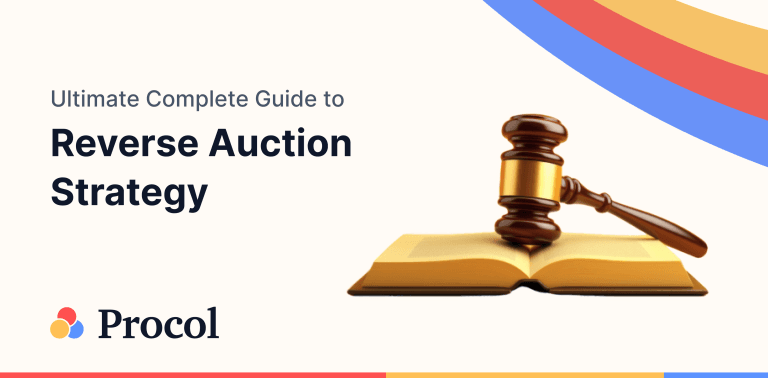
Introduction
Reverse auctions are a unique way to manage procurement. They act in favour of buyers but benefit both suppliers and buyers by offering multiple advantages. Reverse auctions streamline the procurement process, save costs, give small businesses a chance to compete, and more.
Reverse auctions are frequently used in various industries, especially those where procurement is a main aspect of operations. Some industries where reverse auction is used are retail, healthcare, automotive, manufacturing, and construction.
What is a reverse auction?
To understand it properly, let’s first understand what an auction is in general. In an auction, sellers present products/ services, and people (buyers) who are willing to have them bid against each other, and in the end, a higher bid wins the auction.
In contrast to traditional auctions, in a reverse or backward auction, buyers demand specific goods, and to fulfil that demand, suppliers bid and compete with each other. The supplier who provides the lowest offer wins the bid. In digital time, reverse auctions mainly occur through online platforms, so ‘e-reverse auction’ is a specific term used for electronic reverse auctions.
To conduct an interactive reverse auction, businesses can follow the following steps:
- Analyzing the market and establishing the parameters for spending to make sure you’re getting the correct comparison
- Running an RFI beforehand
- Describing the reverse auction plan and settling all terms in advance and
- Providing instructions to your internal stakeholders and suppliers
How does a reverse auction work?
Generally, reverse bidding occurs digitally (virtually) with the help of online reverse auction platforms. Let’s get an overview of how reverse bidding works.
- Buyers (businesses or companies) initiate the reverse auction process by requesting particular products or services they desire to have. In this first step, buyers share their requirements and exactly what kind of specifications the product/ service should have.
- After initiation, the buyer sends invitations to multiple suppliers who fit the buyers’ required criteria to participate in the bid. This can be done through various online procurement platforms.
- Suppliers get themselves registered on the reverse bidding platforms. In real-time, suppliers start bidding and compete with each other by offering the possible lowest bid. A bid can be either price-based or can include any other important factor.
- In competitive bidding, suppliers compete with other suppliers, monitor who is offering the lowest bid, and outbid others by lowering prices to grab the deal. This bid happens at a specific time with a countdown timer, and the supplier has to submit the final bid before the auction ends.
- The supplier who offers the lowest bid wins the bid. Other factors, such as product quality, supplier capabilities, and other predefined criteria, can also be considered while finalizing the deal.
- Lastly, before finalization, the buyer keeps the terms and conditions in front of the selected suppliers, and some negotiation takes place if required, and the deal is closed off.
Different types of reverse auctions in procurement
1. Ranked reverse auction
The ranked reverse auction is the most preferable practice across the industry. When a buyer wants to grab the best deal, they go for ranked reverse auction platforms where most suppliers nearly bid at similar pricing points. The winning bidder is the one who is aware of the current best price.
One drawback is that bidders who are ranked below one, like second or fifth place, may feel there is no chance of winning. The best thing about ranked reverse auction is that the lowest bidder doesn’t get a confirmed contract directly. In this reverse auction process, along with the lowest price, the buyer also considers other criteria like product quality, delivery time, etc.
Buyers have clear evaluation criteria, and considering those crucial points and prices, deals get finalized with suitable suppliers.
2. Japanese reverse auction
As the name refers, ‘Japanese reverse auction’ originated in Japan. In this kind of electronic reverse auction, the buyer sends the opening price to the supplier. If that price is considerable for suppliers, then they will participate in reverse bidding. If more bidders accept the terms and opening price, the buyer can lower the bid price during auction intervals. The advantage for suppliers is they have the right to accept or reject new prices. Until and unless only a single bidder gets left, this process continues.
It’s the backward auction of outsmarting each other to have the best deal. Buyers decide which backward auction type to get in practice based on objectives and goals to meet.
3. Dutch reverse auction
Dutch reverse auction is one type of reverse auction in which the buyer specifies requirements and expectations about price, quality, quantity, value, etc. A supplier who finds the specification considerable and can match that checklist offers their products or services.
This reverse eAuction is effective in carrying out the seamless procurement process. With competitive bidding, both buyer and supplier get their ideal deal.
The Dutch reverse option is considerably used in the auction of raw materials, food products, IT services, and medical supplies.
4. Open or English reverse auction
English reverse auction is mainly practiced in commodity auctions. The buyer sets the defined high bid, and then the price gradually decreases. Every bidder gets a fair chance to bid, and buyers can only submit their bid if it’s better than the current best price.
Buyers must consider other crucial factors, like product quality while determining the lowest bid price. At such auctions, buyers get good value for their money by negotiating deals at preferable terms.
Reverse auction procurement strategy: A profitable deal
Here is a step-by-step reverse auction strategy to implement while considering reverse auction procurement:
- An adequate number of suppliers willing to participate in reverse bidding allows you to choose and grab the best deal.
- Maintain clarity about specifications and requirements regarding cost, quality, and other non-negotiable determining factors.
- Get transparency by clearly mentioning terms, your working process, and values. This helps in building trust.
- Make sure suppliers are qualified and stand up to your expectations.
- Gather all necessary information about potential suppliers.
- Use e-procurement reverse auction software to monitor bidding in real-time, discuss potential risks, get all necessary clarification, and, most importantly, don’t just go for the lowest bid offer; make sure the supplier is meeting all predefined terms.
Top five online reverse auction software
Below mentioned are some of the top known reverse auction websites in India:
Procol
Procol is your ideal e-auction software solution to enhance the procurement process for reverse auctions. It is the one-stop solution for every type of business size and other procurement processes, fostering transparency. Procol is your all-in-one solution — from bid creation to reporting, it takes care of everything.
Founded in 2018, Procol is an ideal reverse auction website in India, securely deployed at many $1B global companies. It has helped procurement teams reduce costs and digitize procurements with top-notch backward auction tools and services. Procol has various unmatched features and capabilities, making it the best procurement management software for your system.
What works for Procol:
- Next-generation platform to get all your spending under control and ultimately gain 2-10% cost savings
- Saved 15,000 hours by automating tedious procurement tasks for 100+ global enterprises
- $100M+ generated savings by Procol customers
- Empower teams with a dedicated mobile-first approach. It ensures procurement professionals have the flexibility they need to drive efficiency wherever they are.
- Businesses gain the flexibility of customizable workflows and templates that meet precise organizational need
- Gives access to 50,000+ suppliers registered and onboarded globally
- Intuitive interface and unmatched efficiency ensure quick setup
- Streamlines capex sourcing for maximum efficiency
- Integrates seamlessly with ERP systems to smoothen procurement operations
- One of the most affordable reverse auction websites in India
Coupa
Its user-friendly platform simplifies the reverse auction process for suppliers. Some of its features include bid management, monitoring bidding, analyzing bidding trends, negotiating better prices, expense management, etc. Coupa improves operational efficiency and is preferred among users.
SAP Ariba
SAP Ariba is a reverse bidding platform that also offers supply chain services and other procurement solutions. It’s quite useful for competitive bidding. From optimized supplier selection to automated bid management, real-time bidding, analytics, and reporting, it handles end-to-end backward auction processes.
Jaggaer
This platform is utilized for both reverse and forward auctions. It can be easily integrated with other procurement tools. Its user-friendly interface, multi-language support, multi-round auction capability, supplier onboarding, and supplier collaboration tools are highlighting features.
Zycus
Zycus is also a well-known electronic reverse auction platform. Procurement system integrating capabilities, customizable reports, automatic bids, and multi-currency support are some of its primary features. It also helps identify and resolve any potential risks.
What is a reverse bidding system?
A reverse bidding system is synonymous with the reverse auction. In the reverse bidding system, to meet buyers’ demand for specific goods, sellers bid each other and lower their bid to outsmart others. This system creates a competitive environment, resulting in sellers bringing their prices down, offering the best deal, and getting an advantage to close the most beneficiary deal among all. This system gives equal opportunity to all bidders; they can see each other’s bids in real time using reverse bidding software and compete in a healthy environment.
Some key features are:
- Establish uniformity in the procurement process
- Build good relationships with suppliers
- Acquisition of suppliers in a timely and cost-effective manner
- Reduction of administrative costs due to automated bidding system
Suppose the automotive manufacturer needs aluminium for production, the manufacturer will send a reverse bid request to aluminium suppliers of his best-known and also wants the best deal with premium quality in aluminium. A reverse bidding system will be arranged, and suppliers will compete with each other, offering the best price and quality to close the deal.
Advantages of reverse bidding
1. Small businesses can compete
Several times in typical procurement settings, suppliers may need some sort of contact to finalize the deal. However, in the case of the reverse bid auction, small or medium companies that have fewer connections find it easier to engage because of an equal playing field.
2. More extensive client availability
Electronic reverse auctions have the advantage of various suppliers all over the world participating in reverse bidding. This encourages suppliers to offer better deals and drives innovation.
3. Seamless operations
Reverse bidding is a less time-consuming process. Often, automated reverse bidding software makes it easy to have swift and seamless interactions between suppliers and buyers. This saved time can be utilized in other important discussions.
4. Simplified procedure for managing the budget
Backward auction simplifies the budget management process, reducing administrative overhead and allowing buyers to make more informed decisions. A predetermined budget avoids the need for lengthy price negotiations.
5. Open scope
Reverse bidding offers the advantage of open scope, which allows buyers to choose between various suppliers, streamline the procurement process, and achieve better outcomes in procurement approaches.
Misconceptions regarding reverse auctions
A reverse bid auction places the emphasis squarely on the selling price
A reverse bid auction is only about bidding low and getting the deal. Along with price, other factors are also considered while finalizing the deal. Ignoring quality or any other crucial factors for just choosing the lowest bid won’t benefit buyers in the long term. You stay in control, just like in the traditional RFP process.
Many times, it has been seen that a supplier with value-adding services, despite not bidding the lowest, has closed the deal. In short, suppliers who align with buyers’ expectations always have an advantage over those who bid low, so it’s not always about selling price.
The cost of reverse bidding is high
It is a common misconception that reverse bidding auctions require very high costs. While there can be some initial setup costs, they are generally cost-effective in the long run. In today’s updated technology era, some electronic reverse auction websites in India, like Procol, stand out as affordable options that streamline the entire reverse auction process.
The e-procurement reverse auction platform’s automated features reduce the use of resources, and the lowest bid a buyer gets in competitive bidding proves reverse bidding to be a cost-effective approach.
Only large corporations use reverse auctions
Reverse bidding auctions are applied to various industries — from manufacturing to IT, retail, real estate, and many more. So, despite the business size, anyone and everyone is open to participating in the backward auction process.
Using the competitive bidding advantage of reverse auction, even a small-sized company can benefit a lot.
Reverse auction procurement platforms consume a lot of time
Reverse auction can seem like a time-consuming process at first, but it just saves time that might need to be invested during the whole process. Time efficiency is the crucial advantage of reverse bidding. Some time investment is required at the initial stage, yet streamlining the procurement process, cost savings, time efficiency, and improved overall efficiency are considerable benefits of backward auction. In cases of extended, complex procurement needs, an online reverse auction can be an effective solution, saving time and offering great flexibility.
A reverse auction can’t beat state contract pricing
At first glance, state contract prices can look beneficial, but they don’t guarantee quality and the lowest bid. In online reverse bidding, a wider variety of suppliers participate in competitive bidding; each supplier bids their lowest price to outsmart the others. Reverse bidding also offers much more flexibility and advantages than a state contract. Real-time backward auction also offers a chance for negotiation, which is not possible in a state contract case. Moreover, reverse e-auction offers an open scope, which gives suppliers access to innovative solutions.
Conclusion
A backward auction is a different process from traditional auctions. Various industries are implementing reverse auction strategies in their operational aspects. Its competitive bidding is advantageous to both suppliers and buyers, as numerous suppliers bid to outsmart each other and win deals.
Reverse e-auction software like Procol can streamline the reverse auction strategy in the most effective way. It offers major features such as cost efficiency, supplier diversity, data insights, quality assurance, and increased organizational efficiency.
Schedule a Demo
We’d love to hear from you. Please give us a call on +1 (209) 305-4922.
Explore more from Procol
Discover expert tips, how-to guides, industry insights, and the latest procurement trends.
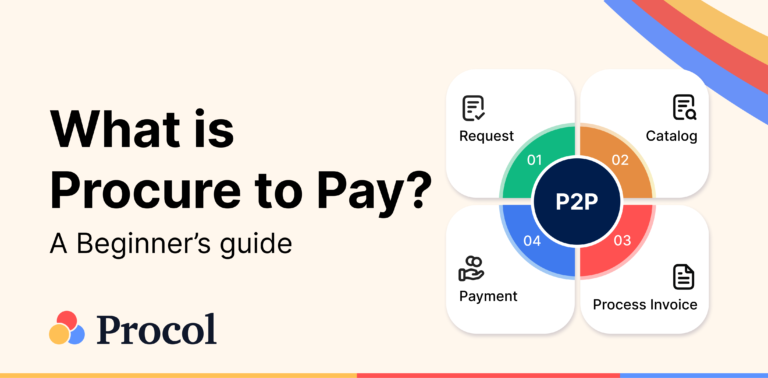
What is Procure-to-pay (P2P)? An Ultimate Guide
Procure to pay is the process from procurement of materials needed...
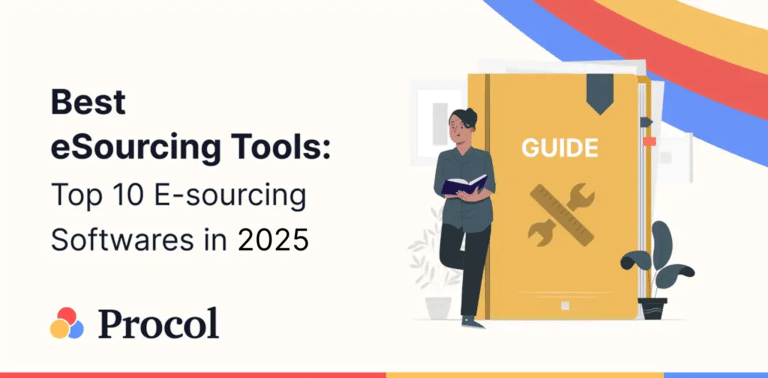
Best eSourcing Tools: Top 10 eSourcing Software in 2025
Discover top 10 e-sourcing tools and esourcing platforms necessary for efficient...
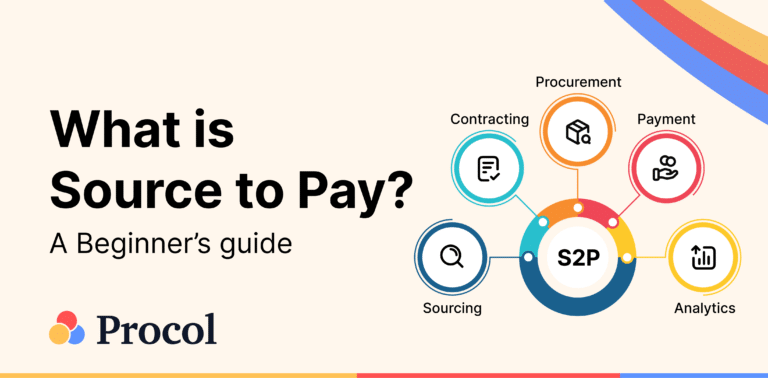
What is Source-to-pay in 2025? An Ultimate Guide
Source to pay is the process of sourcing vendors to procure...
